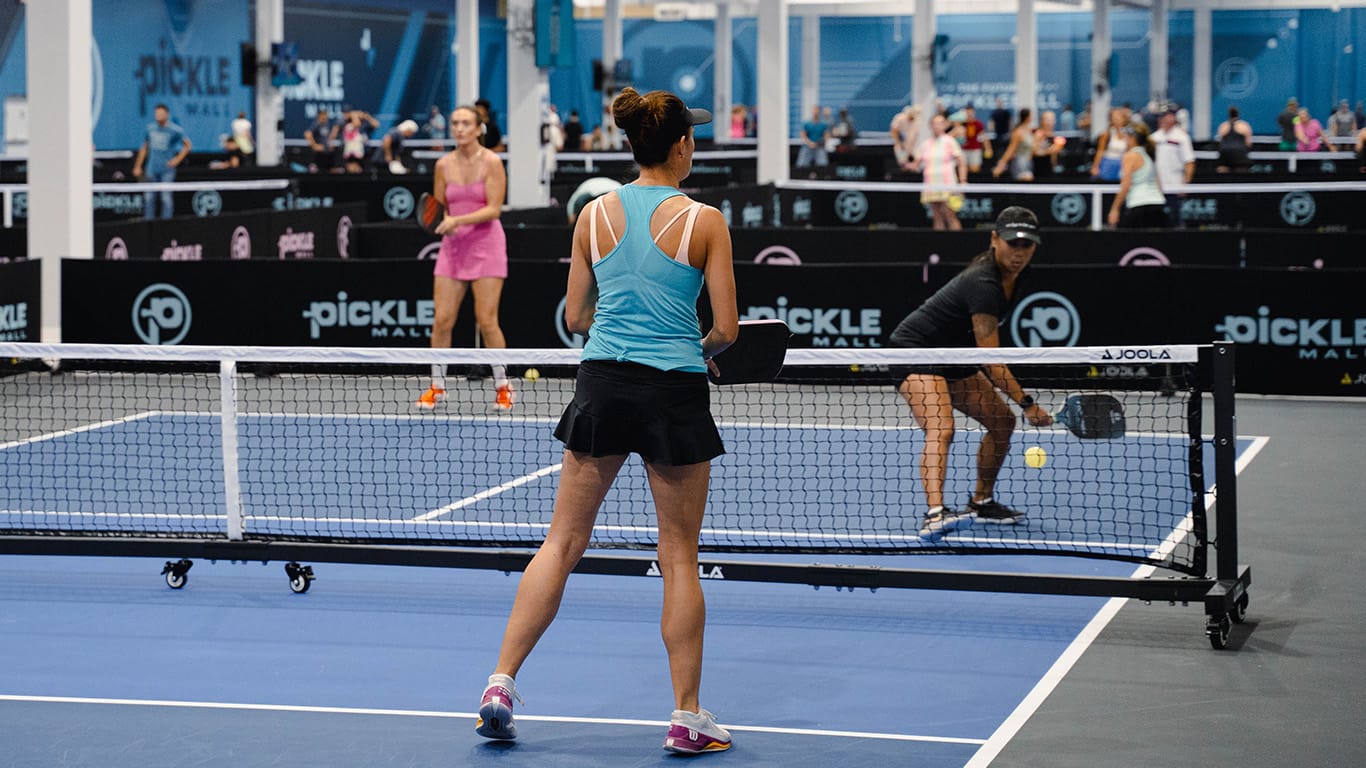Pickleball has rapidly gained popularity among active adults. Its appeal lies in its simplicity, social nature, and the moderate level of physical activity it requires. However, like any sport, playing pickleball carries the risk of injury. Here are six ways to prevent pickleball injuries, ensuring that you can enjoy the game safely for years to come.
LEARN MORE: Conversion to pickleball becomes hot retail redevelopment trend
1. Wear Appropriate Footwear
Invest in shoes designed for court sports. Having seen how shoes play a critical role in ankle stabilization in the NBA, the appropriate footwear can be your first line of defense against sprained ankles. Look for shoes that have flat soles and a firm heel. Avoid shoes with worn out soles with poor traction or mesh material with poor heel support.
2. Shoulder mobility

The shoulder has larger ranges of motion than the elbow, but if the shoulder mobility is limited then you will compensate through your elbow. Compensations through your elbow can lead to lateral epicondylalgia – better known as tennis elbow. Perform shoulder stretches before and after play to maintain adequate shoulder mobility to prevent this frustrating injury.
3. Strength Training
Whether you want to live longer or reduce your risk of injury, research has routinely supported that those who strength train have less injuries and live a longer life. Incorporate two total body workouts each to strengthen your legs and upper body. Focus on compound lifts such as squatting, deadlifts, and pull ups for 3-5 sets of 3-5 repetitions each.
4. Cross training for improved aerobic conditioning
Like strength training, good aerobic conditioning significantly reduces your risk for injury. Cross training is a way to introduce other movements into your fitness routine while increasing your aerobic conditioning. Cross training can include biking, swimming, and circuit training. Focus on long durations of 30-60 minutes two times each week. The intensity should be at a 6 out of 10 so that you could still have a light conversation while performing the exercise.
5. Stay Hydrated
By the time your body signals that you are thirsty, dehydration has begun. Dehydration and electrolyte imbalances can lead to muscle cramps and fatigue, increasing the risk of injury. A loss of 1-2% of your bodyweight can negatively impact your performance and increase fatigue. Drink 8 oz of water every 30 minutes of play and consider electrolyte-replenishing drinks when the temperatures get hot.
6. Listen to Your Body
Pain, soreness, and fatigue are all different but related. Fatigue is our body’s immediate response to say enough is enough. Soreness tells us that the day before we may have done too much. Pain is our danger signal that we may me need to stop doing what we are doing. Listen to the early signs of fatigue and soreness before pain sets in. If your competitive edge gets the better of you and you are in pain, be sure to contact your local physical therapist or orthopedic doctor to help get you out of pain.
This article is brought to you in collaboration with Scottsdale Professionals Collective.
Author: Dr. Adam Loiacono, PT, DPT, CSCS is a sports physical therapist and performance coach with 15 years working in professional sports including the NBA, WNBA, MLS, and NWSL. Adam’s experiences in sports rehab, physical therapy, sports science, and performance coaching offer an integrative approach to managing athletes and business professionals. To work with Adam, visit www.AdamLoiacono.com for more information.




